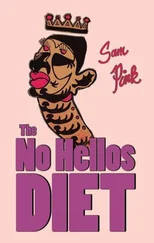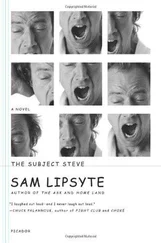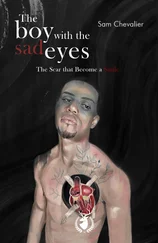‘A postman?’
‘Yes. We think he was just unlucky. As opposed to the other citizens killed by falling frogs.’
‘What sort of frogs were they?’
Red Queen admired that sort of attention to detail.
‘Mostly the sort of frogs that are hard to identify when you drop them from a mile up. Almost all of them – that is, the epicentre of the frog event, or whatever you call it – fell on MIC’s Atlanta offices. They took out the glass roof of the atrium. It was over the cafeteria. A lot of people in hospital with very nasty cuts. The offices are still closed.’
‘Our Friends are sneaking in and planting more bugs, then…’
‘Yes. Lots more. MIC, as I don’t need reminding you, is the company that was paying Banacharski. From a good way back. They were funding his chair at the Sorbonne. When he resigned in protest at being funded by an arms company it looked like he was resigning in protest at being funded by an arms company, but everything we’ve since learned suggests that actually he was resigning in order to work directly for the arms company. The letters to Holderness talk about a man, Nieman, an operative for “the firm”, who’s clearly Banacharski’s liaison for his research. He lived for several years with no visible means of support. So MIC are all over this. We think it was their freelances who went after the guy they found in the plane.’
‘What about the guy in the plane?’
‘Still in hospital. Still a waste of time.’
‘You know MIC has links to government.’
‘What arms and baby-milk company doesn’t?’
‘Very serious links. We are, theoretically, on the same side.’
‘We are on the same side – but in this, no. This machine is a game-changer. If they get it they’ll be their own side. And the frog thing. It can’t be chance. As I was saying, though: the mass media.’
When Red Queen talked about the mass media, that didn’t mean newspapers and television. It meant the hundreds and thousands of the psychically sensitive, wandering mad. To most people, they were a disaggregated army of street-corner crazies, but for the DEI they were an underground railway, an early warning system, a giant biological radio tuned to sketchy transmissions from… well, that was the question. Red Queen preferred to remain sceptical, but running the mass media was Sosso’s department, down in the underhangar. Red Queen didn’t have to worry about it in detail. It was valued. Funding depended on it.
Sosso’s theory of it was only ever going to be a theory: whenever anything became empirically testable, it lost its Dubya status and was transferred out of DEI. Dubya was the Directorate nickname for any file coded UU, for ‘Unknown Unknowns’: double-U. But Sosso’s theory was this.
Old-style ‘mediums’ – Victorian charlatans in robes and false noses, wired up to jerry-rigged table-knocking devices – purported to have some control over their gifts. But media, to use the correct plural, were actually as passive as air and relatively common. The Chinese were rumoured to be ‘training’ them in very large numbers; harvesting Falun Gong and the Tibetan monasteries and ‘repurposing’ the prisoners in permanent detention. That gave even Red Queen the creeps.
What made media media was that only a mind slightly hanging off its hinges could let whatever it was through, and the way it came through was garbled. Low signal, high noise. Any single medium would produce indecipherable gibberish. Yet in aggregation the signals had yielded suggestive results. A hobo in Palo Alto might mumble ‘Harra fugg… a-budda. Zzzzally! Mmmrgfff’ at precisely the moment that a heavily medicated paranoid schizophrenic in the Bowditch Hall at McLean’s would exclaim, from swampy dreams: ‘Paternoster! Carthago delenda est! I am Caligula!’ And if you combined the sounds of their voices the recording might throw up a fragment of a word in Aramaic.
Sosso, a true believer, liked to use the image of each medium being a single string on a huge harp; you’d hear one note but you needed to hear the chord. Or the assemblage being a pipe organ: the more pipes you could hear the closer to the tune you got.
In a system they’d grimly termed ‘tag and release’, operating over more than two decades through homeless shelters, out-patient mental health units, combat veterans’ trauma units and addiction clinics, thousands of potential media had been identified and fitted with transponders, typically hidden in the fillings of their teeth, or in metal pins fitted somewhere in the skull or jaw where they could benefit from bone conduction.
The second generation of these devices were able to tell when the medium was asleep or unconscious, and flag the signals received accordingly. It was generally believed in the Directorate that sleep – or catatonia, states arising from hypnotic or psychedelic drugs, alcoholic dementia or near coma – was the most likely to yield what Sosso called ‘accurate’ or ‘high yield’ material.
Sosso’s team worked on these. They used bleeding-edge voice recognition and translation software to sieve the data, compiling and noting sentence fragments and unusual or foreign words. They combed different overlays and combinations of voices, experimented with staggering inputs according to the different time zones or lunar phases, squelched the bass or treble, speeded and slowed the recordings, even played fragments backwards on the off chance of backward-masked messages. Mostly, they came up mud.
They also tracked the frequencies of particular phonemes – according to time logged and geographical concentration. This was often what yielded the result.
Sosso had a piece of software that allowed her to mouse over a satellite map of the States. On the top-right side of her desktop were two panels – one a ticker tape of sentence fragments that had been tagged as of interest; another a dynamic list of the most common utterances, ranked in order of frequency, available for the last year, last week, last twenty-four hours, last minute.
Marked on the map with mobile red dots were tagged media – mostly, they were concentrated in western California and Florida. Manhattan was red. There was a scarlet dusting over Oklahoma and Montana, too.
If Sosso moused over a dot she could pull up a file: personal history and utterance history broken down statistically. A ticker tape of current utterance could be displayed, over the voice, in real time. The signals from Montana were always lousy, crackly as hell, but in the big cities, they freebooted on the cellphone networks.
Media who said the same thing as each other within a two-minute window would be colour-tagged blue for affinity. They’d return to red if a twelve-hour period had passed without a recurrence. If there was a recurrence, or something else significant to suggest a synchronicity, they’d go a brighter blue and slightly increase in size. A very thin blue line would connect them on-screen.
The usual global utterance rankings tended to have mushy collections of sibilants, non-signifying smacky-lip noises, belches and high whinnies of anxiety at the top. Few words made it in. The less imaginative obscenities sometimes made the top thirty. ‘Kill’ and ‘help’ and ‘mama’ occasionally nudged into the top hundred.
In the days preceding the arrival of the Intercept, the patterns had been altogether stranger. Usually, no more than a couple of blue lines at any one time appeared on Sosso’s map: a sketchy dark blue diagonal would connect the Mission District in San Francisco with the French Quarter in New Orleans for, maybe, forty-eight hours. A disconnected line would strike from Fire Island to Key West, flicker, evanesce. Accelerated to the one-second-to-six-hours timescale they used to scan manually for patterns, it looked like a broken 1980s screen saver: a dusting of red dots jittering like midges in the summer air, blue lines appearing at random and then disappearing a second or two later. Rarely, very rarely, one of the blue lines would sprout another line from one end, like an elbow, or two lines would intersect at a non-perpendicular vertex. Then that would go.
Читать дальше












